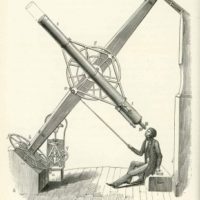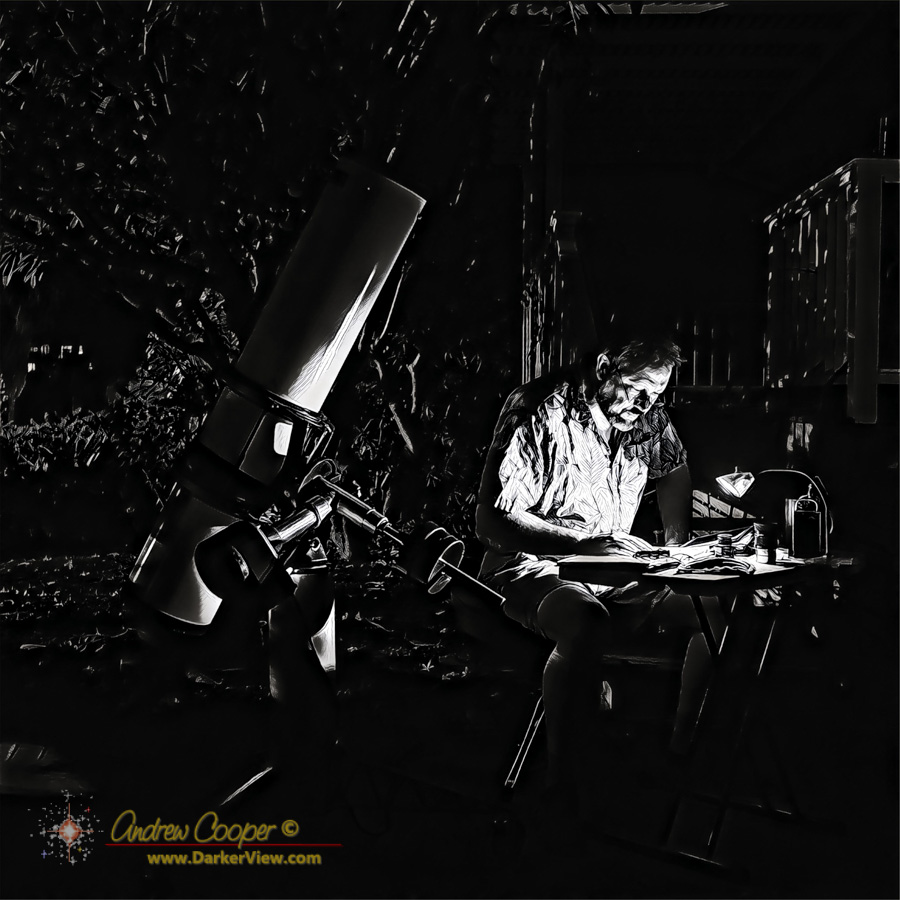
Category: Observing
Orion and Meteor
Observing Session

Waiting for Dark
A View from the Past
As an evening pastime in these COVID restricted days I have been delving into the past again. Again reading the work of an amateur astronomer from long ago.
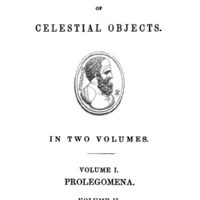
I had previously read through the work of Rev. Thomas Webb, a vicar and amateur astronomer active in the late 1800’s. Webb frequently refers to the work of a yet earlier observer, Capt. William Henry Smyth.
Retired British Navy Captain Smyth was a backyard observer, gazing at the stars with a 150mm refractor from a garden behind his home in Bedford England. His telescope was quite good for the time, made by Tully of London, the best money could buy. This telescope was eventually purchased by the British Government to be used in the 1874 transit of Venus expedition to Egypt and the 1882 Venus transit in Jamaica. It now sits in the collection of the Science Museum, London.
Smyth published two volumes on astronomy in 1844 under the title A Cycle of Celestial Objects . Volume II of this set, commonly called The Bedford Catalogue or The Bedford Cycle, contains descriptions of more than 850 double stars, clusters, and nebulae, serving as a guide to what may be observed with a small telescope. The Bedford Catalogue became the standard at-the-telescope reference for other amateur observers for many decades until it was generally replaced by Webb’s Objects for Common Telescopes.
Continue reading “A View from the Past”Globus Aerostaticus
As I worked my way through the evening’s observing list I came to an entry for the asterism ‘Hot Air Balloon’
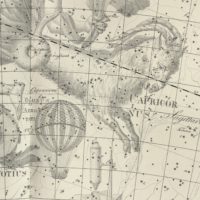
This asterism found its way into my personal observing catalog from the one of the Saguaro Astronomy Club observing lists. These lists are an excellent resource for those who roam the starry sky, sort of an ultimate best-of list. These lists are one of the many sources I pulled together when creating my own giant list of where to aim my telescope.
So often I find surprises in my own database among the thousands of objects that I have dumped in there over the years.
Asterisms are simply odd patterns of stars that form memorable groups, but are not necessarily real clusters or other stars that are physically associated with each other. Many of these are well known such as The Coathanger, the Diamond Ring around Polaris, or The Stargate.
When I wandered through the coordinates listed from the Balloon I found a pretty starfield, but nothing that stood out as a recognizable shape, much less a balloon. I wrote down a few comments on the area and a note to myself to look this up later. What is The Balloon?
Continue reading “Globus Aerostaticus”My Telescope Sings to Me
OK, I did not expect this.
I have been observing from my driveway each evening this last week now that the Moon has left the evening sky. Pleasant sessions wandering through the stars and clusters of Scorpius, Sagittarius, and Ara.
The week has also featured gentle trade winds at the house, resulting in fickle breezes around the telescope which is mostly in the shelter of the house. I get some manini gusts that make it around the garage that really do not bother me but do keep the mosquitoes down.
These breeze have created an unexpected phenomena, they make my telescope sing to me.
It is a gentle and resonant low B note as the breeze plays past the front of the telescope. Much like blowing across the top of a beer bottle, the tube of the telescope resonates with the breeze. Apparently a Cave Astrola 8″ f/6 telescope is a tenor.
Sometimes quiet, sometimes quite notable, I listen to the telescope hum while I look up the next cluster to observe.
Now if you excuse me I need to chase the pigs out of the yard… Again.
Driveway Observing
Eyepiece Time
Given stay at home orders and a virus haunting our community I have gotten quite a bit of eyepiece time this year. Mostly quick driveway session in the evening, or sometimes the early dawn hours, a solo activity perfect for social distancing.
I usually use my roll-out scope ready in the corner of the garage, a classic 8″ Cave Astrola. Just roll it into the driveway, plug it in using the purpose located power receptacle on the corner of the lanai,. slide an eyepiece in… Ready to go in two minutes.
Last night was a perfect example… It was raining at sunset, but an hour later the skies were clear and dark. Better yet the rain had left clear, haze free air overhead with great transparency. I spent an hour hunting down dark nebulae in Aquila, dark clouds of galactic dust best visible with perfect skies.
The pages of the observing notebook fill quickly, a page or two each evening until the Moon comes back. I have so many object I have never viewed, so many easily visible from the driveway with a fairly small 8″ ‘scope.
Often I come across pleasant surprises, a pretty binary or a deep red carbon star, the region surrounding my target rich with stars and wisps of nebulae, so many wonders I have never seen despite years at the eyepiece.
Social Distance Measured in Light-Years
Social media is currently full of advice on what to do while stuck at home waiting out a pandemic. I find I need no advice… A dark sky and a telescope? No problem.
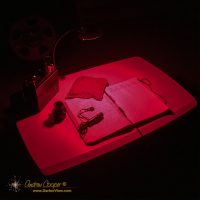
Awake at 4am this morning I pulled the Astrola from the garage and observed until the dawn lit the sky.
Once the evening clouds dissipated I again pulled out the telescope and observed for another two hours this evening.
Following the advice of staying at home I have been observing alone from our driveway. This weekend would have been our normal club dark-of-the-moon star party at Kaʻohe, getting together with other observers. Obviously this was cancelled.
This period of social isolation is measured in pages of notes on stars and nebulae, measured in the light-years I cross while peering into the universe.



